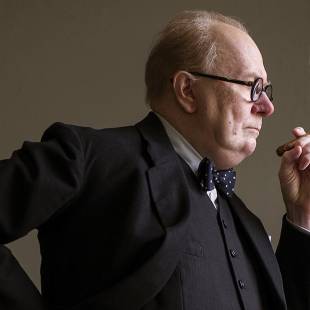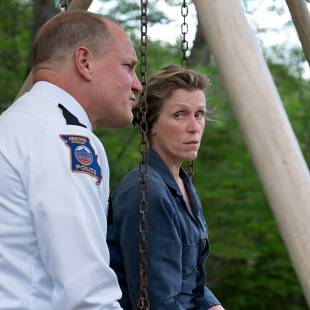Loving Vincent Parent Guide
The life of the artist is told through his paintings.
Parent Movie Review
If you study the life of Vincent van Gogh, you will know that on July 27, 1890, the obscure painter shot himself. But the suicide attempt failed, so the injured man staggered back to his hotel room in the small French town of Auvers, where he succumbed to his wounds a couple of days later.
It is not hard to believe Vincent was unstable enough to take his life. The artist had a history of mental illness. In December of 1888, he cut off his ear and presented it as a gift to a prostitute. In 1889, he admitted himself to Saint-Paul-de-Mausole psychiatric hospital in Saint-Rémy. And during the short time intervening between leaving the institution in May of 1890 and his death on July 29,1890, Vincent sought the care of a physician.
Still, there are a few unsettling facts that have caused some to question this account. The theory of Steven Naifeh and Gregory White Smith (authors of Van Gogh: The Life) seems to have influenced this film’s telling of his fate.
The script uses the character of Armand Roulin (voice of Douglas Booth) to investigate the puzzle of Vincent van Gogh (voiced by Robert Gulaczyk). Armand is tasked by his father (voice of Chris O’Dowd), a postman who handled the countless pieces of correspondence between the artist and his loyal brother Theo (voice of Cezary Lukaszewicz), to deliver Vincent’s final letter. The quest proves more difficult than it at first appears when Armand discovers the intended recipient is also deceased. Reluctantly, Armand then travels to Paris and Auvers in search of someone worthy of accepting the painter’s last words. In doing so, Armand meets the people who associated with Vincent and begins to piece together a picture of what caused the sorrowful man’s untimely passing.
While the plot of this movie may be touching and even convincing, it will not be the main reason viewers will be impressed with this production. Instead, the most amazing thing will be the way it is animated. Using a technique that has never been attempted before, Loving Vincent uses oil paintings to convey its story. Taking inspiration from Vincent’s work, each scene is set in one of his landscapes, and each character is based on one of his portraits. A team of artists worked together to create the motion by replicating each masterpiece, taking a photo, then repainting the canvas, taking another photo, repainting the canvas, etc… until they have captured enough movement in the photos to put together an animated film. (Some computer graphics and live-action performances were incorporated as well.) The end result is a masterpiece of its own.
The themes in this screenplay may be too mature for young audiences, especially with the depictions of self-harm and bloody wounds. Some sexual references, excessive drinking and frequent smoking are portrayed too. Yet teens and adults, especially those with an appreciation for the arts, will undoubtedly be wonderstruck by this kindly tribute to a now-famous, misunderstood master.
Directed by Dorota Kobiela, Hugh Welchman. Starring Douglas Booth, Jerome Flynn, Robert Gulaczyk . Running time: 94 minutes. Theatrical release September 22, 2017. Updated January 25, 2018
Loving Vincent
Rating & Content Info
Why is Loving Vincent rated PG-13? Loving Vincent is rated PG-13 by the MPAA for mature thematic elements, some violence, sexual material and smoking
Violence: A character suffers from depression, which leads to some angry confrontations and self-harm (a scene depicts him cutting off his ear with some blood is shown). Other violence includes scuffles, fistfights, and threats with a knife and gun. A suicide is discussed frequently. Blood from a fatal wound seen. Bullying and mocking occur.
Sexual Content: A few sexual references are heard. Sexual activity is implied. A prostitute and a sexually transmitted disease are mentioned.
Profanity: Infrequent use of scatological slang, profanity, slurs and name-calling.
Alcohol / Drug Use: Characters smoke and drink frequently. One character drinks to excess.
Page last updated January 25, 2018
Loving Vincent Parents' Guide
This animation is based on the life of painter Vincent van Gogh.
Vincent and his brother exchanged hundreds of letters, which have been of great benefit to historians.
Although it is most widely accepted that the troubled artist committed suicide, there are some other theories. Steven Naifeh and Gregory White Smith, authors of Van Gogh: The Life propose an accidental homicide as the cause instead.
The animation Loving Vincent has garnered a lot of attention because of the film’s creative mixing of oil paintings with live action. You can learn more about the process at the official website of Loving Vincent.
News About "Loving Vincent"
This animation is based on the life of painter Vincent van Gogh. Thanks to his prolific letter writing, historians have some great insights into the life of the troubled artist. Despite this, there are still varying theories about his death.
The animation Loving Vincent has garnered a lot of attention because of the film's creative mixing of oil paintings with live action.
First, a Painting Design team was assembled and these artists spend one-year recreating the unique style of van Gogh's masterpieces, and turning them into fluid backgrounds with computer animated elements (birds, clouds, smoke, etc.). Next, real actors performed their scenes against green screens, so they could be superimposed over the painted backgrounds. Some of the action was also shot on sets that looked like van Gogh's paintings. Then the live-action material was combined with computer animation and design team's paintings. This created the reference material needed for the painting animators.
These painters transformed the reference materials into animation frames, carefully mimicking van Gogh's brush strokes. Beginning with the first frame, a 6k resolution digital still was taken, and then movement added. At the completion of each frame, a photo would be taken of the canvas, and then the artist would paint over it to create the next frame... take a photo... paint over it... take a photo.. and so on. Over 65,000 frames were created for the film. By the end of each sequence, the resulting painting is the image seen in last shot. There are 898 shots in the film.
You can learn more about they process at the official website of Loving Vincent.
From the Studio:
On 27th July 1890 a gaunt figure stumbled down a drowsy high street at twilight in the small French country town of Auvers. The man was carrying nothing; his hands clasped to a fresh bullet wound leaking blood from his belly. This was Vincent van Gogh, then a little known artist; now the most famous artist in the world. His tragic death has long been known, what has remained a mystery is how and why he came to be shot. Loving Vincent tells that story.
Written by BreakThru Productions
Home Video
The most recent home video release of Loving Vincent movie is January 16, 2018. Here are some details…
Release Date: January 16, 2018
Loving Vincent releases to home video (Blu-ray or DVD) with the following extras:
- Walking through Vincent s Neighborhood
- The Making of Loving Vincent
- Interview with Douglas Booth
- 3 Paintings in 1
- Interview with Eleanor Tomlinson
- Creating the Props
- Beginning the Animation
Related home video titles:
The life and techniques of other artists are explored in Big Eyes and Tim’s Vermeer. Douglas Booth appears in Jupiter Ascending.





